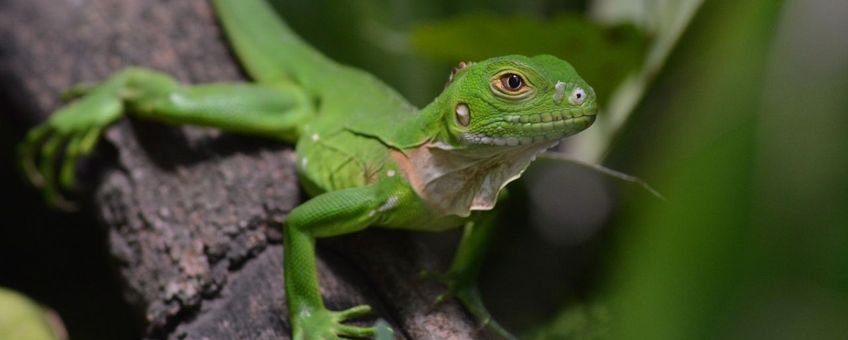
Hotel Iguana: iguana nests as an important link within Caribbean ecosystems
Wageningen Marine ResearchOn most Caribbean islands, the native iguana species is the largest native land animal. This is also true for the island of Sint Eustatius, where the Lesser Antillean iguana (Iguana delicatissima) is found. Female Lesser Antillean iguanas lay their eggs in underground nests that they dig themselves, which always consist of an entrance, a tunnel, and a nesting chamber. The reasons why a female iguana chooses a specific location are still unknown.
Underground networks
However, it is clear that there are two categories of nesting sites: those where a nest is dug by a single individual, and those where multiple individuals dig their nests. In the latter case, a complex underground network of multiple entrances, tunnels, and chambers can develop, which may be connected with each other. These larger nesting sites can be several dozen square meters in size and can be used by multiple females over consecutive years.

Knowledge about nests still limited
Knowledge about Lesser Antillean iguana nests is still in its early stages. In 2022 and 2023, some of these iguana nests were partially excavated with the central question being: what do these nests look like? It is important to obtain a clear understanding of the size of Lesser Antillean iguana nests, both in terms of nest volume and the number of eggs that females lay. It is important to know what percentage of the laid eggs hatch. A genetic study from 2018 identified relatively high inbreeding within the iguana population on Sint Eustatius. Therefore, conservationists want to gain insight into whether this leads to a reduced chance of successful reproduction.
Use of nests by other species
During the excavation, it was noted that Lesser Antillean iguana nests were larger than initially thought (see photo A): the deepest nesting chamber was found 1.65 meters underground and had a tunnel that was 6 meters long. However, another remarkable discovery was made during the digging: the tunnels and chambers of iguana nests were found to be used in various ways by other animal species. Both ameivas (a species of lizard; photo C) and several species of invertebrates were found: tarantulas (photo E), crickets (photo D), ant nests, and the black land crab. For the ameiva species, both juveniles and adults, as well as eggs, were found. This suggests that these lizards use the iguana nests for laying eggs, hunting, and also for thermoregulation (regulating their body temperature).
Hidden relationships
The current data and new insights have been obtained from only ten nests. It is therefore likely that these underground findings are just the tip of the iceberg. Many questions about these interactions are still unanswered. For example, we do not yet know how many plant and animal species actively or passively use iguana nests, and to what extent they depend on iguana nests to complete their life cycle.
It is already known that iguanas, including the Lesser Antillean iguana, play various keystone roles and therefore are important species for ecosystems. For example, by eating plants and dispersing seeds, they contribute to the variety and health of native forests. As the largest native land animals on Sint Eustatius, they have a significant impact on the local ecosystem. However, the fact that these iguanas also create large-scale and complex underground structures, and thus facilitate the presence and life cycles of other species, remained unknown until now.

Antillean iguana population under severe pressure
Meanwhile, the Lesser Antillean iguana population on Sint Eustatius is struggling for survival. For instance, there is a constant threat of being outcompeted by non-native green iguanas. It is also alarming that the population has been at a critically low level since the 1990s. This is caused by illegal trade and consumption of Lesser Antillean iguanas, and by the drastic degradation of Sint Eustatius' ecosystems due to free-roaming livestock, invasive species, and coastal development. As a result, the vulnerability, including to (the consequences of) hurricanes, is increasing. What the negative effect is of the declining iguana population on other native species is unknown. However, it is likely that the disappearance of the Lesser Antillean iguana on Sint Eustatius will have a greater impact than previously thought. To find out exactly what this impact is, further research is essential.
More information
- The article 'Inquilines highlight overlooked keystone species role for Iguana delicatissima Laurenti, 1768 as ecosystem engineer' is published in the journal 'Herpetology Notes'.
Text: Julian Thibaudier, Dolfi Debrot & Cecile Leuverink, Wageningen Marine Research; Thijs van den Burg
Photo’s: Julian Thibaudier (leadphoto: just hatched Lesser Antillean iguana); Thijs van den Burg
